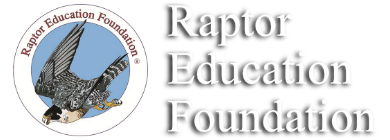Winner of the 2020 Skipping Stones Honor Award For Nature and Ecology Books.

Click to enlarge
More Reviews:
“A unique book aimed at introducing young and beginning birders to the world of raptors. . . . Creative for certain! Helpful, too.”–Jim Williams, Wingnut blog, Minneapolis Star Tribune
“A very cool new book.”–Doc Kirby, On The Bookshelf
“Bird enthusiasts of all ages will find this book full of educational fun.”–Skipping Stones
“Beautiful, educational coloring book.”–Katie L. Burke, American Scientist
“All the essays were well-written and provided lots of easy-to-understand information, which allows the reader to identify many different types of raptors. I also really enjoyed the further reading at the back of the book about the kestrel box. The instructions were clear-cut, and the activity was easy and fun to do.”–Hannah, age thirteen, Kids’ BookBuzz
Review from Brian Millsap, President, Raptor Research Foundation
This original review of our book was written in 2003. Anne Price has incorporated Brian Millsap’s comments and with the completely new design, our book will continue to reflect the best in science and art to promote raptor conservation in the 21st Century.
 |
Brian Millsap, National Raptor Coordinator for the US Fish & Wildlife Service meets with Anne Price, REF Curator and Author at the 2019 Raptor Research Foundation conference in Fort Collins, Colorado. Brian will be reviewing the newest version of our book which sold out very quickly at Buteo Books whose display is a popular feature at many raptor conferences. |
| It has been my pleasure to review your coloring book Raptors: The Eagles, Hawks, Falcons, and Owls of North America. I should point out from the outset that these are my comments, and not official comments of Raptor Research Foundation (RRF). Nevertheless, I’m proud to be able to offer you these personal observations in my capacity as President of RRF.
First, I want to congratulate you and the artist on a truly fantastic coloring book. Although I’m not expert on coloring books per se, my 10 year-old daughter is, and she was pretty impressed. What impressed me was the taxonomic scope of the book truly is a full representation of the raptors of North America. Too many children’s nature books portray just a few of the more common species, assuming kids won’t be interested in the rarer stuff they can’t see around the house. Unfortunately, that approach fails to instill an appreciation for the full range of diversity that exists in nature, an appreciation we should be fostering at an early age. This is the only children’s book I’ve seen that does a comprehensive job portraying the richness and diversity of birds of prey that exist in North America.
The taxonomic scope is not the only aspect that impressed me, however. You also have done a very good job picking interesting tidbits to highlight in the species accounts, and to the extent of my knowledge, your portrayals are accurate. It is hard to know what to stress in these short accounts, but with the exception of a few species, I think you pick the best and most interesting stories to tell. The few species where you might consider modifying in future revisions are the bald eagle, swallow-tailed kite, merlin, and barn owl. In the bald eagle account, I’d suggest at least mentioning this species’ fantastic recovery from population lows caused by DDT. With regard to swallow-tailed kites, recent research has shown that most US birds gather in a few large staging areas in Florida before departing the US for wintering areas in Brazil, where the entire US population overwinters in a few large night roosts in the Pantanal. In the merlin account, include dragonflies in the prey list (many merlins I’ve caught for banding while on migration along the Atlantic Coast were covered with the dragonfly remains!). Finally, in the barn owl account, you might note that in the west, particularly northern Colorado, the species digs burrows for nesting in stream banks to help protect it from the extremes of the weather. These comments aren’t meant to detract from the excellent work you’ve done in the existing accounts. As it stands, collectively the book paints an important story of ecological diversity.
As a scientist, this is certainly the kind of coloring book I’d be happy to give my kids. And, as a raptor biologist, I’d be proud to give it to a colleague’s kids. You and Don Malick have a children’s book to be proud of. Congratulations!
Brian A. Millsap, President, Raptor Research Foundation
March 1, 2003
Reserve your copy today! |
|


